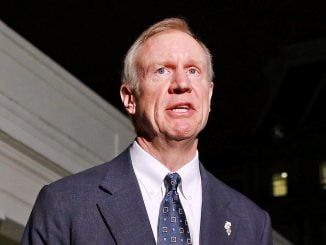WASHINGTON — The U.S. economy likely accelerated in the second quarter as consumers ramped up spending and businesses invested more on equipment, which would confirm that the sluggish performance early in the year was temporary.
Gross domestic product probably increased at a 2.6 percent annual rate in the April-June period, according to a Reuters survey of economists. The poll, however, was conducted before the release of data on Thursday that showed a sharp drop in the goods trade deficit in June and strong gains in wholesale and retail inventories.
That data prompted economists to raise their GDP growth forecasts to as high as a 3.5 percent rate, which would be more than double the first quarter’s 1.4 percent growth pace. The Commerce Department will release its advance second-quarter GDP estimate on Friday at 8:30 a.m. EDT (1230 GMT).A rebound in growth, together with a tightening labor market, would leave the Federal Reserve on course to announce a plan to start reducing its $4.2 trillion portfolio of Treasury bonds and mortgage-backed securities in September as well as raise interest rates for a third time this year.
“The Fed is certainly looking for a rebound in the strength of GDP growth that maintains the moderate economic expansion we have seen during this current economic cycle,” said Sam Bullard, a senior economist at Wells Fargo Securities in Charlotte, North Carolina. “That would allow plans for further monetary policy tightening.
“The U.S. central bank left rates unchanged on Wednesday and said it expected to start winding down its portfolio “relatively soon.
“Even if GDP growth regains momentum in the second quarter, it will probably not exceed 2.5 percent for the full year. President Donald Trump had set an ambitious 3.0 percent growth target for 2017.While the Trump administration has vowed to cut corporate and individual taxes as part of its business-friendly agenda, Republicans’ struggles in Congress to pass a healthcare restructuring have left analysts skeptical on the prospects of fiscal stimulus. So far, the impasse in Washington has not hurt either business and consumer confidence.
A resurgence in consumer spending likely accounted for the bulk of the pickup in economic growth in the second quarter. Consumer spending, which accounts for more than two-thirds of the U.S. economy, grew at a 1.1 percent rate in the first quarter, the weakest performance in a year.
“I am a little worried about the consumer in the second half of this year because of the lack of wage growth,” said Ryan Sweet, senior economist at Moody’s Analytics in Westchester, Pennsylvania. “For consumers to continue to lead the economy we need wage growth to accelerate.
“Annual wage growth has struggled to break above 2.5 percent.
Business spending on equipment is expected to have picked up from the first quarter’s 7.8 percent rate, marking a third straight quarterly increase. Investment on nonresidential structures like oil and gas wells likely provided another boost to GDP growth in the second quarter.
While businesses probably continued to carefully manage their inventories, they appeared to spend more in some places. Inventory investment is expected to have been neutral or made a modest contribution to growth after slicing off 1.1 percent percentage points in the first quarter.
Similarly, trade is forecast making little or no contribution to output after adding two-tenths of a percentage point in the first three months of 2017.Housing was likely a drag on growth in the last quarter. That would follow two straight quarters when investment in homebuilding supported GDP growth. Auto production is expected to have rebounded after slumping in the first quarter.
Alongside the second-quarter GDP report, the government will publish revisions to data going back to 2014, including the first-quarter GDP estimate. Economists expect little change in the growth picture. They believe that a seasonal quirk tends to exert a weak bias on first-quarter GDP.
The government has undertaken to fully address the so-called residual seasonality when it publishes a comprehensive revision of the GDP series in 2018.”Our rough estimate is that the revision will be close to zero on net,” said Daniel Silver, an economist at JPMorgan in New York. “The issue of ‘residual seasonality’ is likely to persist through the upcoming revision.”



